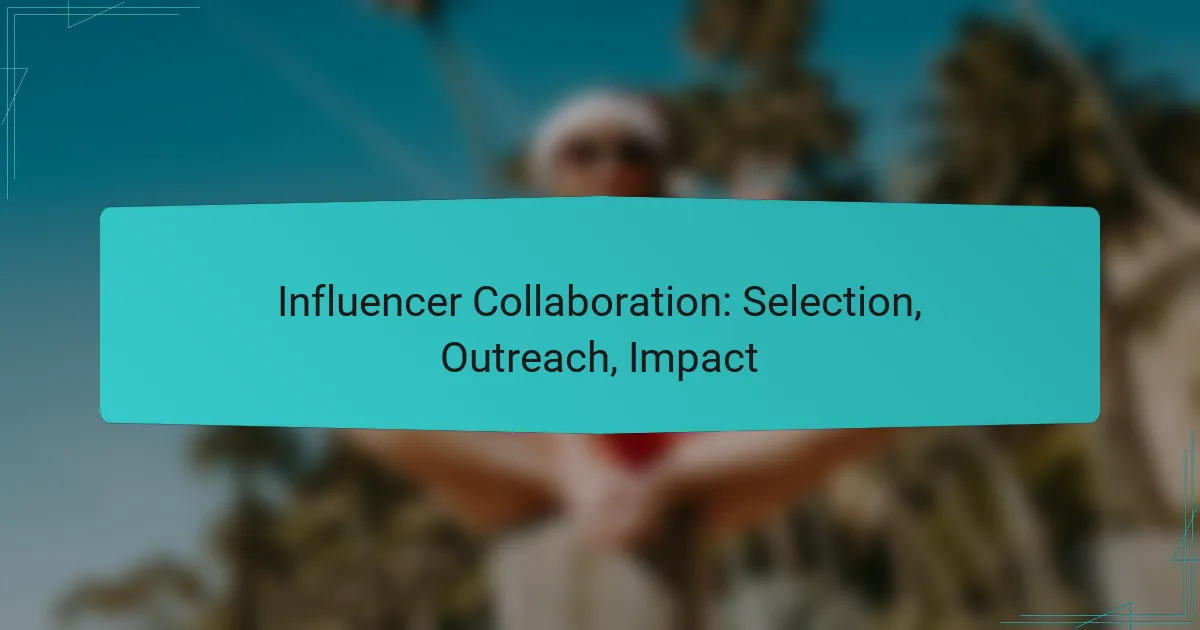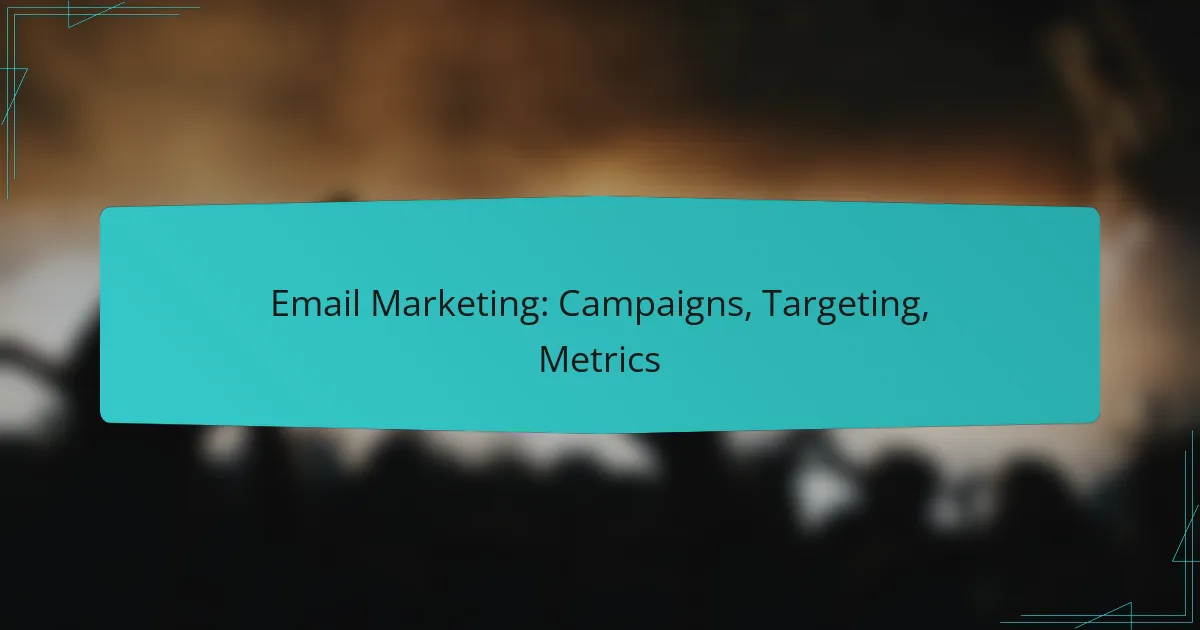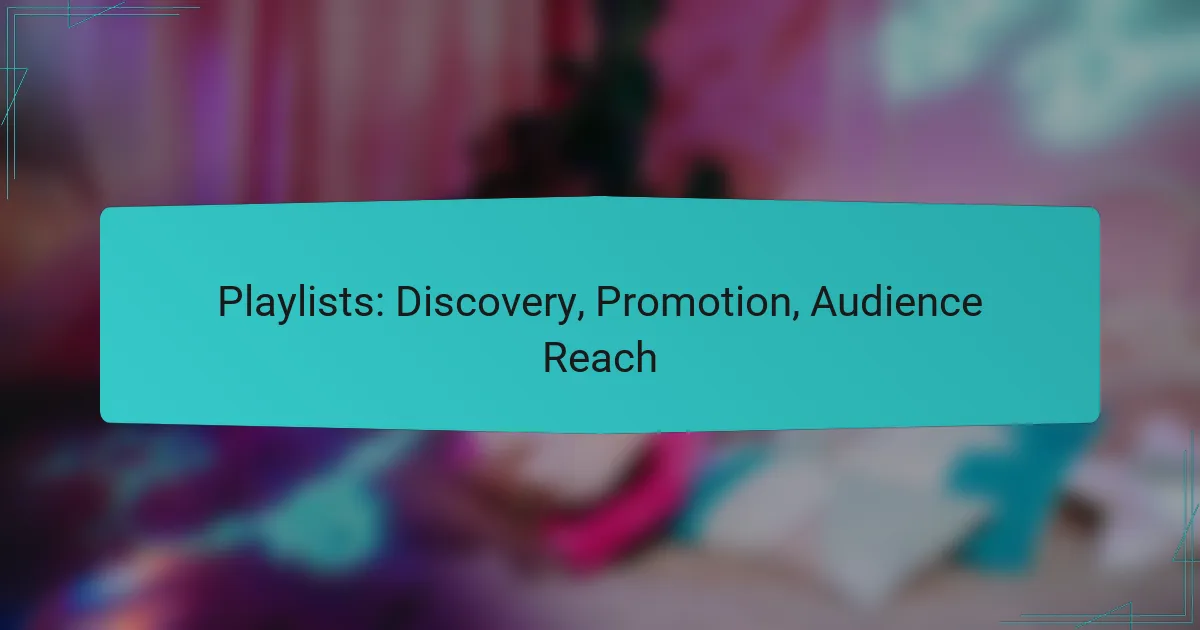Influencer collaboration is a strategic approach that involves selecting individuals whose audience and values align with your brand to maximize marketing effectiveness. By employing personalized outreach strategies and leveraging social media, brands can forge meaningful partnerships that enhance visibility and drive impactful results. These collaborations not only boost brand awareness but also foster trust and expand audience reach, ultimately leading to higher conversion rates.

How to select the right influencers for collaboration?
Selecting the right influencers for collaboration involves identifying individuals whose audience, engagement, and values align with your brand. This process ensures that your marketing efforts resonate effectively with potential customers and drive meaningful results.
Audience alignment
Audience alignment is crucial for successful influencer collaborations. Ensure that the influencer’s followers match your target demographic in terms of age, interests, and location. For example, if your product targets young adults in urban areas, an influencer with a predominantly rural or older audience may not be effective.
Use tools like social media analytics to assess the influencer’s audience demographics. Look for influencers whose followers show a genuine interest in your industry or niche, as this increases the likelihood of engagement and conversion.
Engagement metrics
Engagement metrics provide insight into how actively an influencer’s audience interacts with their content. Key metrics include likes, comments, shares, and overall engagement rate, which is typically calculated as the total engagement divided by follower count.
Focus on influencers with high engagement rates, even if their follower count is lower. A smaller, highly engaged audience can often yield better results than a larger, passive one. Aim for engagement rates above 2-3% as a general benchmark.
Brand values compatibility
Brand values compatibility ensures that the influencer’s beliefs and messaging align with your brand’s identity. Collaborating with influencers who share similar values fosters authenticity and trust among their audience.
Evaluate potential influencers based on their past content and public statements. If an influencer promotes sustainability and your brand prioritizes eco-friendly practices, this alignment can enhance the collaboration’s credibility and impact.
Content quality assessment
Content quality assessment involves reviewing the influencer’s previous work to gauge their creativity, professionalism, and overall aesthetic. High-quality content reflects positively on your brand when shared with their audience.
Look for influencers who produce visually appealing, well-edited content that resonates with your target audience. Consider their storytelling ability and how effectively they communicate messages related to your products or services.
Previous collaboration success
Assessing previous collaboration success can provide insights into an influencer’s effectiveness. Look for case studies or testimonials from brands that have worked with the influencer to understand the outcomes of those partnerships.
Inquire about specific metrics from past campaigns, such as increased sales, website traffic, or social media growth. Influencers with a track record of successful collaborations are more likely to deliver positive results for your brand as well.

What outreach strategies work best for influencer collaboration?
Effective outreach strategies for influencer collaboration include personalized messaging, clear value propositions, leveraging social media platforms, and utilizing mutual connections. These approaches enhance engagement and increase the likelihood of successful partnerships.
Personalized messaging
Personalized messaging involves tailoring your outreach to each influencer’s unique style, interests, and audience. This strategy shows that you have done your homework and genuinely value their work, making them more likely to respond positively.
To craft a personalized message, start by mentioning specific content they have created that resonates with your brand. Avoid generic templates; instead, aim for a conversational tone that reflects your brand’s personality.
Value proposition clarity
Clearly articulating your value proposition is crucial in influencer outreach. Influencers need to understand what’s in it for them, whether it’s monetary compensation, free products, or exposure to new audiences.
When presenting your offer, be specific about benefits and expectations. For example, if you are offering a commission for sales generated through their channels, outline the percentage and payment terms to avoid confusion.
Utilizing social media platforms
Social media platforms are essential tools for influencer outreach. Use channels like Instagram, Twitter, and LinkedIn to connect with influencers where they are most active. Engaging with their content through likes, comments, and shares can help establish rapport before direct outreach.
Consider using direct messaging for initial contact, but ensure your message is concise and respectful of their time. Keep your outreach focused and relevant to their audience to increase the chances of a positive response.
Leveraging mutual connections
Leveraging mutual connections can significantly enhance your outreach efforts. If you share contacts with an influencer, consider asking for an introduction, as referrals can build trust and credibility.
When reaching out through a mutual connection, be sure to mention the connection in your message. This establishes a common ground and makes your outreach feel more personal and less cold.

What impact can influencer collaborations have on digital products?
Influencer collaborations can significantly enhance the visibility and appeal of digital products, leading to various positive outcomes. These partnerships often result in increased brand awareness, higher conversion rates, enhanced customer trust, and broader audience reach.
Increased brand awareness
Collaborating with influencers can dramatically boost brand awareness by leveraging their established audiences. When influencers promote a digital product, they introduce it to potential customers who may not have encountered the brand otherwise.
To maximize this impact, brands should choose influencers whose followers align with their target demographic. This ensures that the message reaches the right people, increasing the likelihood of engagement and recognition.
Higher conversion rates
Influencer partnerships can lead to higher conversion rates by providing authentic endorsements that resonate with their followers. When an influencer shares their positive experience with a digital product, it can motivate their audience to make a purchase.
Brands should track conversion metrics closely, such as using unique discount codes or affiliate links, to measure the effectiveness of these collaborations. This data helps in refining future influencer strategies and optimizing marketing efforts.
Enhanced customer trust
Influencers often serve as trusted figures in their communities, and their recommendations can enhance customer trust in a brand. When an influencer vouches for a digital product, it can alleviate doubts and encourage potential customers to take action.
To build this trust, brands should collaborate with influencers who genuinely align with their values and products. Authenticity is key; audiences can often tell when a promotion feels forced or insincere.
Broader audience reach
Influencer collaborations can help brands tap into new and diverse audiences, expanding their market reach. By partnering with influencers from various niches or demographics, brands can introduce their digital products to different segments of the population.
Brands should consider the influencer’s audience demographics, engagement rates, and content style when selecting partners. This strategic approach can lead to more effective outreach and a wider customer base.

What criteria should be used to evaluate influencer partnerships?
Evaluating influencer partnerships requires a focus on performance metrics, return on investment, and audience feedback. These criteria help determine the effectiveness and alignment of the influencer with your brand goals.
Performance metrics
Performance metrics are essential for assessing how well an influencer’s content resonates with their audience. Key metrics include engagement rates, reach, and impressions. For instance, a good engagement rate typically falls between 1% and 3% for most platforms, while higher rates may indicate a more dedicated following.
Consider tracking metrics over time to identify trends and patterns. This can help you understand which types of content perform best and inform future collaborations. Tools like Google Analytics or social media insights can provide valuable data for this analysis.
Return on investment
Return on investment (ROI) measures the financial effectiveness of your influencer partnerships. To calculate ROI, compare the revenue generated from the partnership against the costs incurred, including influencer fees and product costs. A positive ROI indicates a successful collaboration.
When assessing ROI, consider both direct sales and brand awareness. For example, a campaign may not yield immediate sales but could significantly increase brand visibility, leading to long-term customer acquisition. Aim for a balanced view of both immediate and future benefits.
Audience feedback
Audience feedback provides insights into how the target demographic perceives the influencer and the partnership. Monitoring comments, shares, and direct messages can reveal audience sentiment and engagement levels. Positive feedback often correlates with successful partnerships.
Surveys and polls can also be effective tools for gathering structured feedback. Ask your audience about their perceptions of the influencer and whether they feel the collaboration aligns with your brand values. This information can guide future influencer selection and strategy adjustments.



